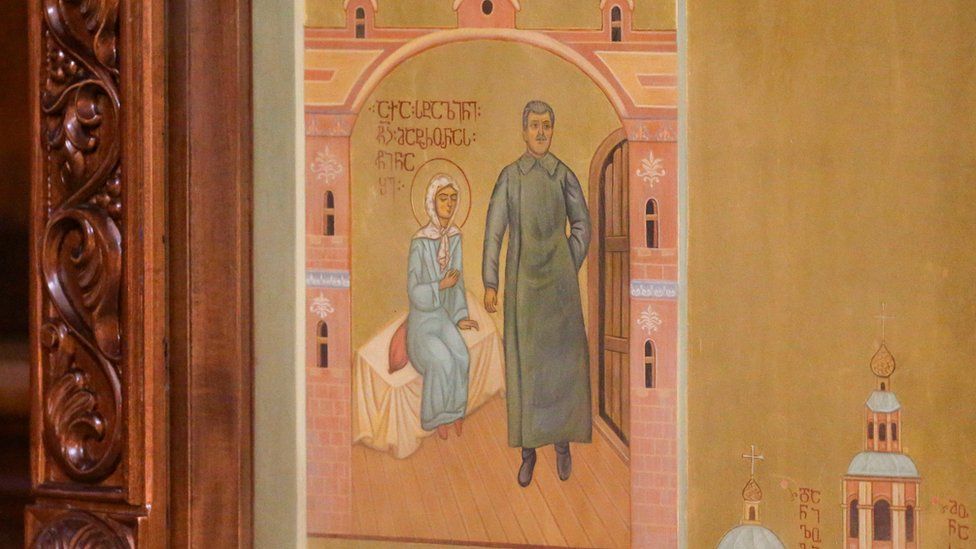-

-
-
Loading

Loading

A painting depicting Soviet dictator Joseph Stalin meeting a Russian Orthodox saint has been removed from Georgia's main cathedral. The Georgian Church stated that the painting would be "amended" due to "insufficient evidence" that the two figures had ever met. The artwork has sparked public outrage and was recently vandalized with blue paint by an activist. Church leaders and the ruling party have condemned the act of vandalism. The Patriarchate of Georgia released a statement emphasizing the need for icons to portray "real stories" and called for the image of Stalin to be changed. The icon had been donated to the church several months ago by a nationalist party suspected of Kremlin connections. Controversy surrounding the icon only arose recently when a former politician drew attention to its presence. In opposition to what they saw as the glorification of a tyrant, an activist threw paint-filled eggs at the icon. This action has led to death threats against the activist, who has gone into hiding under police protection. The incident has sparked a national debate in Georgia about Stalin's legacy. While the ruling party has condemned the vandalism, their stance on the broader discussion about Stalin remains unclear. The Soviet Past Research Laboratory has noted a rise in the rehabilitation of Stalin's image in Putin's Russia, suggesting that Moscow may be using this narrative as a form of information warfare to influence the Georgian public. The emergence of 12 new statues of Stalin across Georgia in the past decade has been observed. Stalin, originally named Iosif Dzhugashvili, was born in the town of Gori in 1878. He played a prominent role in the Russian revolution and led the USSR from 1924 until his death in 1953. Millions of people lost their lives under Stalin's regime due to his ruthless discipline and state terror. While many in Georgia reject the Soviet Union's legacy, some still take pride in Stalin's humble beginnings in the country. British author Simon Sebag Montefiore, visiting Tbilisi, expressed surprise at seeing the dictator's image in the cathedral, noting that although Stalin was initially a believer, he later rejected religion and embraced mass killings as a means of societal improvement.